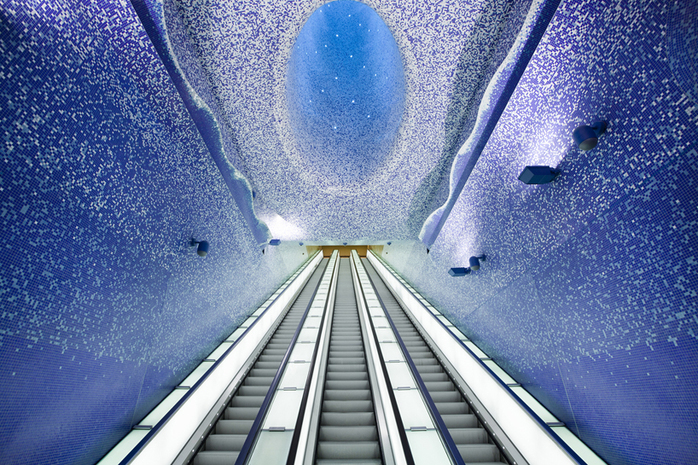
Toledo Station by Andrea Resmini
Beneath a city’s streets lie endless tunnels that transport people
from A to B seamlessly and efficiently. Some tunnels lie deeper than
others, crisscrossing each other like veins in the ground. Some of these
tunnels are wide, some narrow, some strewn with rubbish and lonely,
partnerless winter gloves, some polished and endlessly captivating.
Depending on where your travels take you, you'll come across infinite
subway stops on your journey — and some may even leave you a lasting
impression. Subway stations are designed to serve public transit users
in the most effective way possible, but there are some that also
captivate their audience of migrants on their journeys of work and
pleasure. Here are some of the most beautiful and breathtaking subway
stops in the world.
Bockenheimer Warte Station (Frankfurt, Germany)
This subway station will drive your senses wild!
Originally constructed in 1986 but expanded by architect Zbiginiew Peter
Pininski in 2001, the entrance to this station baffles locals and
tourists alike on a daily basis. It appears as a vintage train spewing
itself out of the concrete, evoking some sort of horrific transit crash.
Pininski has stated that he was strongly influenced by popular
surrealist artist René Magritte — and the influence shows! Upon entering
the bowels of the decrepit train on street level, transit users are
carried downwards into the station proper, where they're greeted by a
straight-lined, minimalist environment evocative of a space-age
laboratory. Blue tinted glass, polished steel frames, and
porcelain-white subway tiles lend the space a really clean and powerful
edge.
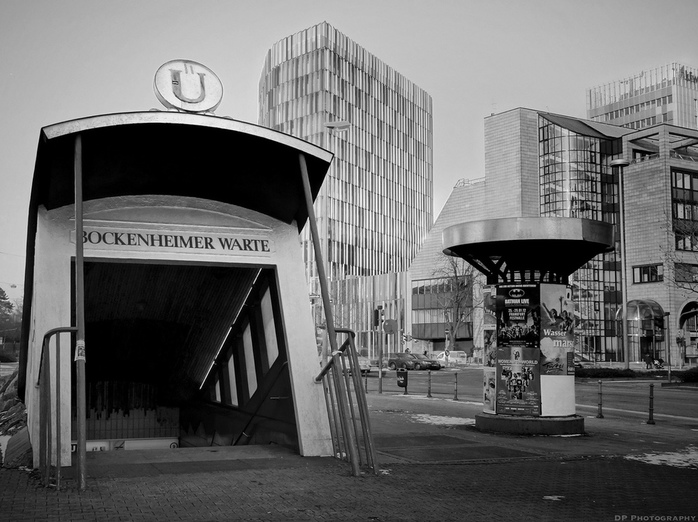
Unique Entrance to Bockenheimer Warte Station
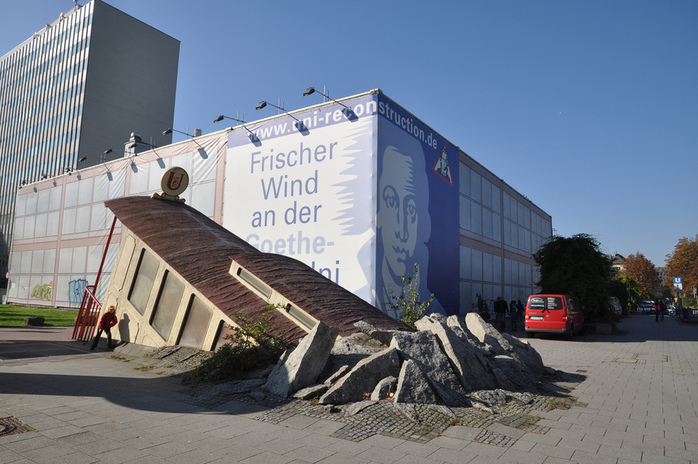
This Looks Nasty!
City Hall Station (New York City, United States)
Not all subway stops are dark and foreboding. Some
can be exceptional and blessed with actual rays of sunlight penetrating
the tunnel ceilings. How do designers achieve this effect? City Hall
subway station in New York City is located closer to ground level and
incorporates steel-rimmed glass skylights on the tunnel’s ceiling,
bathing the station in natural light during the day. It makes a nice
change and calms those transit users who feel uncomfortable in confined
spaces. Constructed in October 1904, City Hall Station was designed with
Victorian architecture in mind — and many of its original fittings
remain in place to this day.
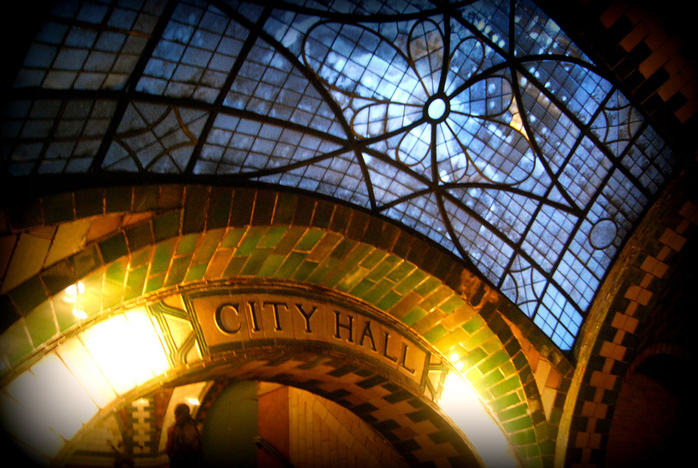
Rays of Sunlight Penetrating the Tunnel Ceiling at City Hall Station
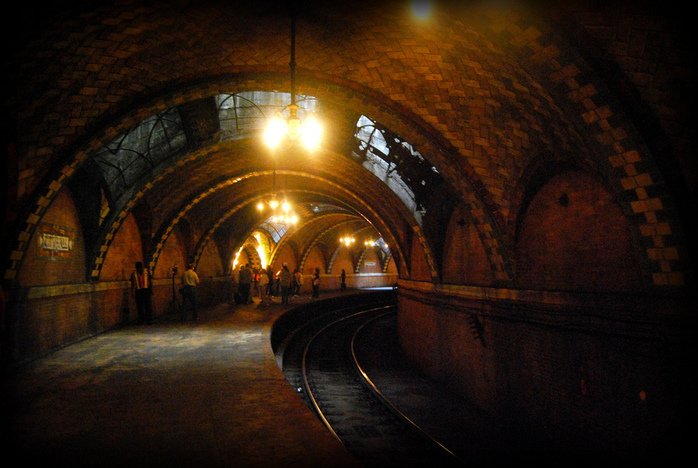
City Hall in NYC was Designed with Victorian Architecture in Mind
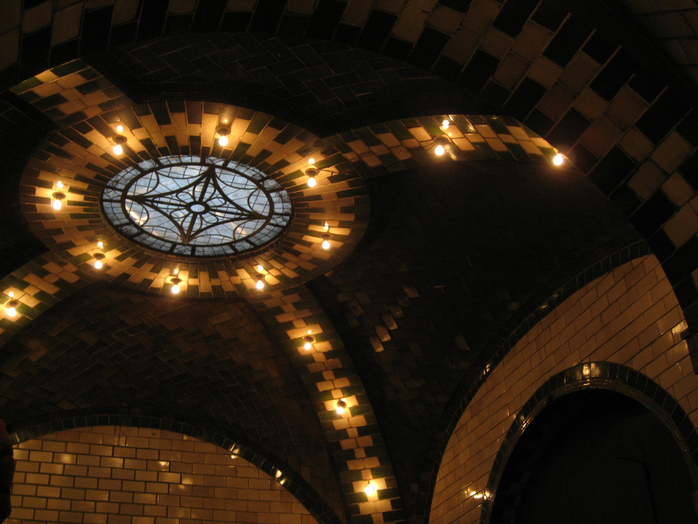
This Doesn't Look Like a Subway Station, does it?
Formosa Boulevard Station (Kaohsiuna, Taiwan)
Chances are if you’ve had the pleasure of visiting
Taiwan’s Formosa Boulevard subway station, you‘ve walked away knowing
that you'll never see anything quite like it again. This transit stop
underwent extensive remodelling in the late 2000s in time for the 2009
World Games. It’s best known for its massive Dome of Light,
designed by Italian artist Narcissus Quagliata. The dome is the largest
piece of glass work in the world and now hosts weddings underneath its
spectacular scenes of nature and wildlife. Vivid colours and stunning
wrap-around views grace the station’s ceiling, and circular columns
offer a splendid feast for the eyes during both day and night.
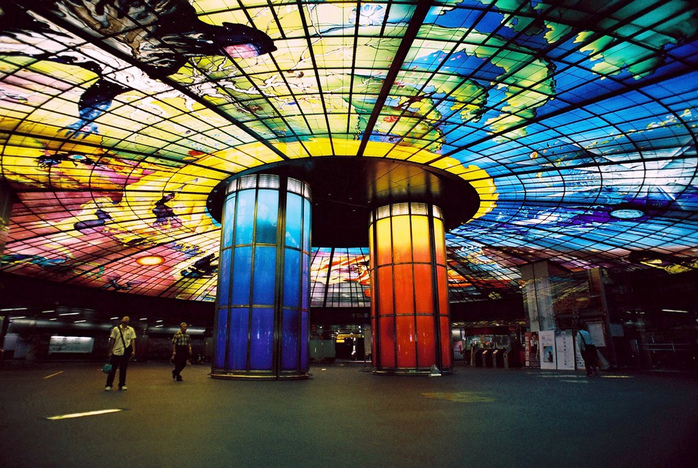
Dome of Light at Farmosa Boulevard Station
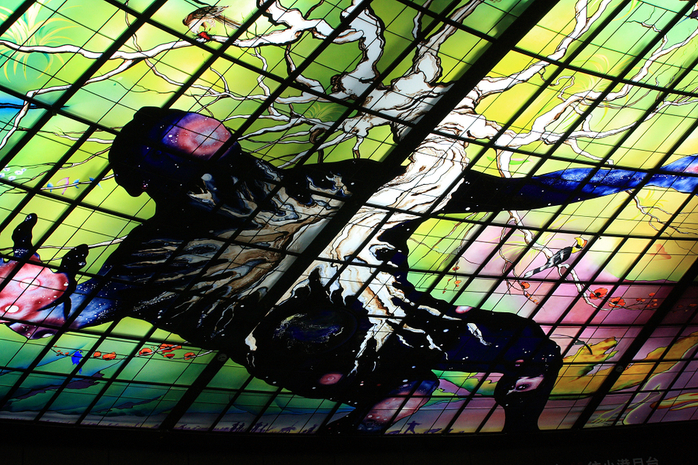
What Is This Reminding You Of?
Kirovsky Zavod Station (St. Petersburg, Russia)
Stepping into Kirovsky Zavod subway station feels
as if you're stepping into a marbleized crypt dedicated to the memory of
Russian revolutionary and communist leader Vladimir Lenin. Natural
light floods the marble and porcelain station, where skylights running
along the tunnel’s roof ultimately guide all transit users to a giant
bust of Lenin sitting proudly at the end of a hallway. A museum-like
hush fills the station’s busy platforms as locals and tourists navigate
their way in and out of Kirovsky Zavod station. This particular subway
stop is an architect’s symmetrical dream in that all archways, columns,
and floor tiles line up precisely, forming clear passageways through the
underground mecca. Opened in November 1955, Kirovsky Zavod station is
part of the St. Petersburg Metro line.
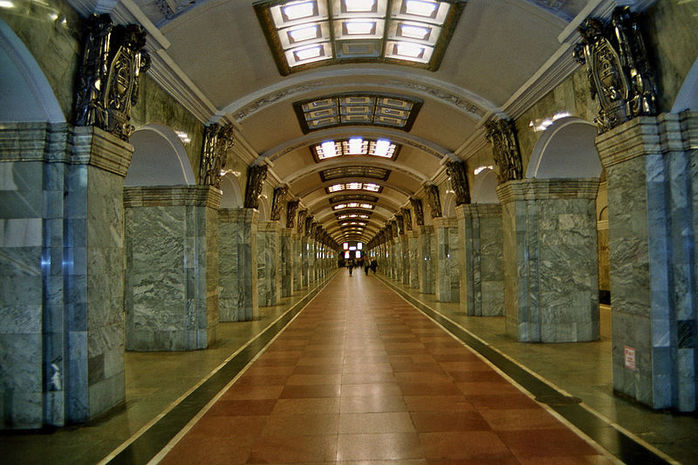
Kirovsky Zavod by Wiki Media Commons
Muenchner Freiheit Station (Munich, Germany)
Originally opened to the public in October 1971,
this subway station was extensively renovated by lighting designer Ingo
Maurer from 2008 to 2009. Despite the fact that most of the station’s
major structure was left intact, the station now evokes a very modern,
sci-fi feel with lighting panels installed in
the walls, columns, and ceiling tiles. Pops of colour emerge
intermittently amid the station’s main colour scheme of light grey and
porcelain white. Muenchner Freiheit subway station serves as a major
junction between the U-Bahn U3 and U6.
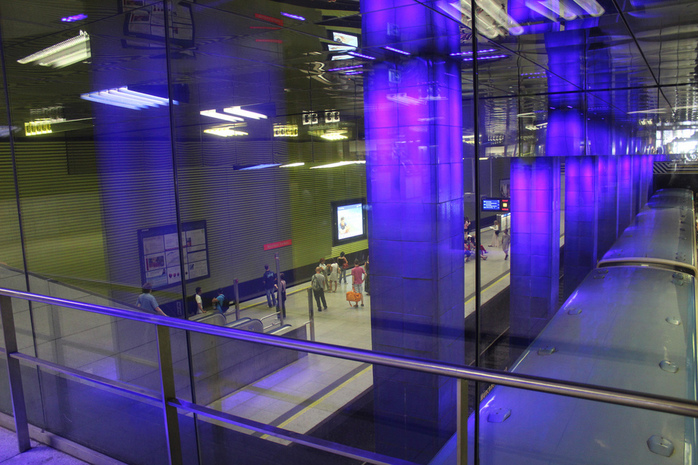
Sci-fi? No, Muenchner Freiheit Station!
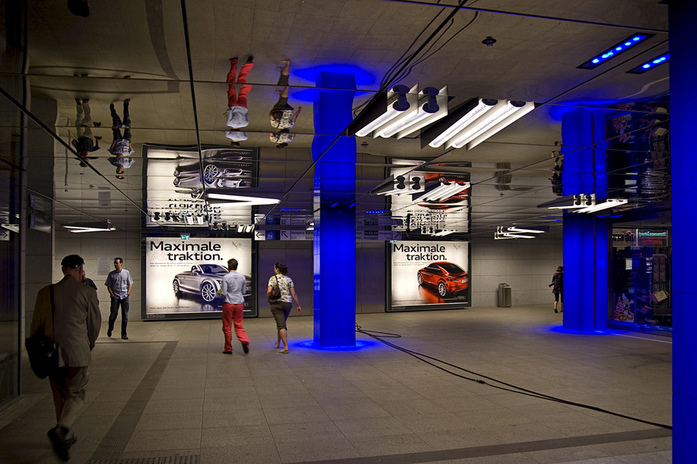
Look Up!
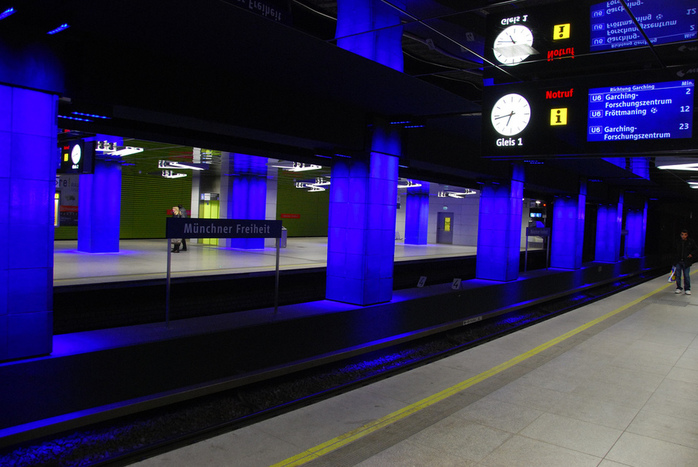
Futuristic and Old School at the Same TIME
Museum Station (Toronto, Canada)
Museum Station originally opened in 1963 and was
named for Toronto’s Royal Ontario Museum (the ROM). Extensively
remodelled in April 2008, the new design incorporates popular exhibits
from the ROM and takes on a more minimalist and streamlined look. The
station’s structural columns were modelled after the ancient Egyptian
deity Osiris, Toltec warriors, Doric columns found in Greece’s mighty
Parthenon, and First Nations house posts. Steel, aluminum, and polished
subway tiles replaced the somewhat tired-looking décor of the 1960s,
allowing a truly modern look to bring the city's underground to life.
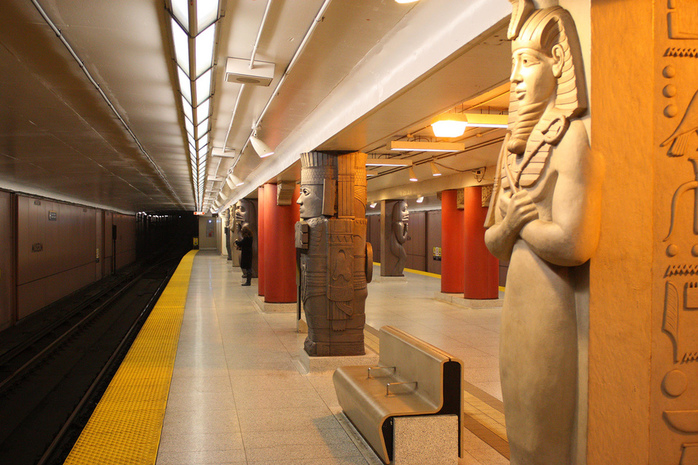
Explore ROM right at the Museum Station in Toronto!
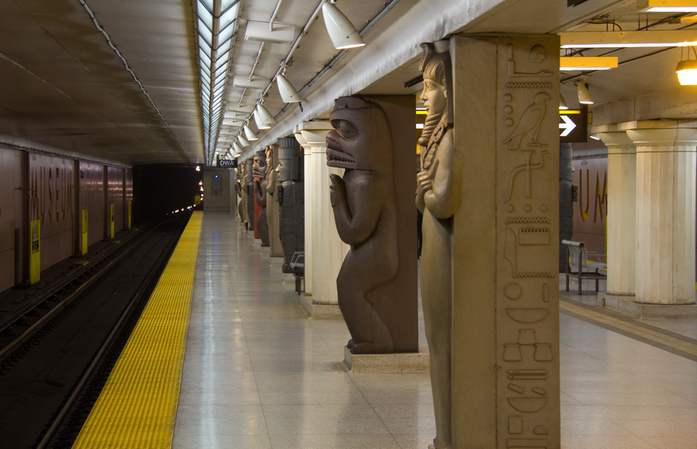
Meet the Past
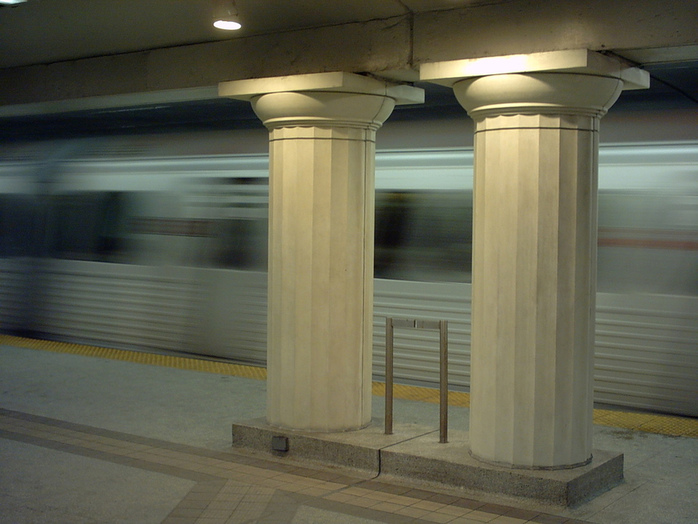
Olaias Station (Lisbon, Portugal)
Stepping into Lisbon’s Olaias Station is like
stepping into a kaleidoscope of colour! It was recently voted ninth on
British newspaper The Telegraph’s list of the 22 most beautiful
subway stations in Europe. Designed by architect Tomas Taveira and
opened in May 1998, this station is part of Lisbon’s busy red subway
line. Steel and aluminum escalators carry transit users down into the
station’s depths, bypassing spaces filled with coloured glass panels and
intricately decorated structural columns. The station’s multi-coloured
floor tiles are haphazardly placed but still look like they line up
perfectly. Veins of colour run from the floors and walls all the way up
to the ceilings. In the evenings, the station lights dim and bathe
pedestrians in a calming, soft yellow glow.
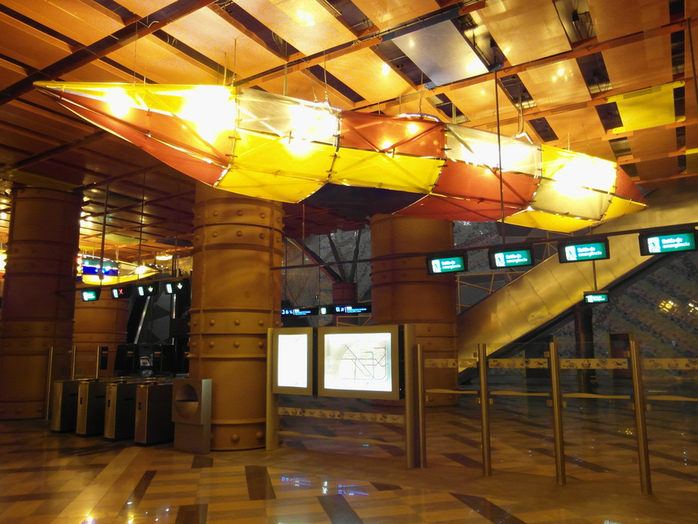
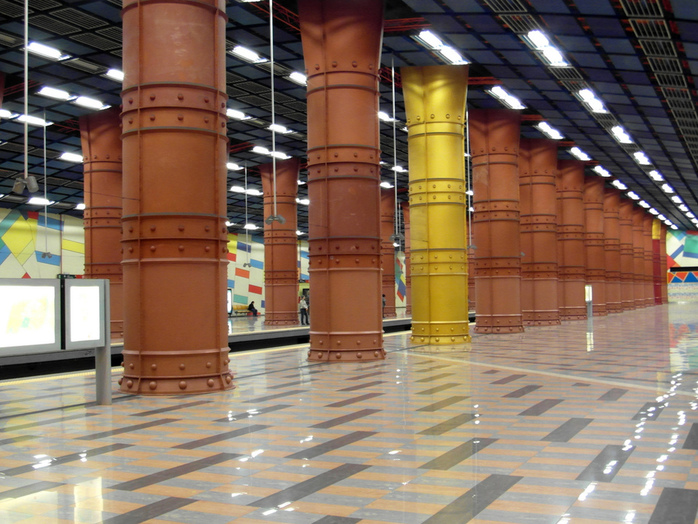
Olaias Station was Designed by Tomas Taveira
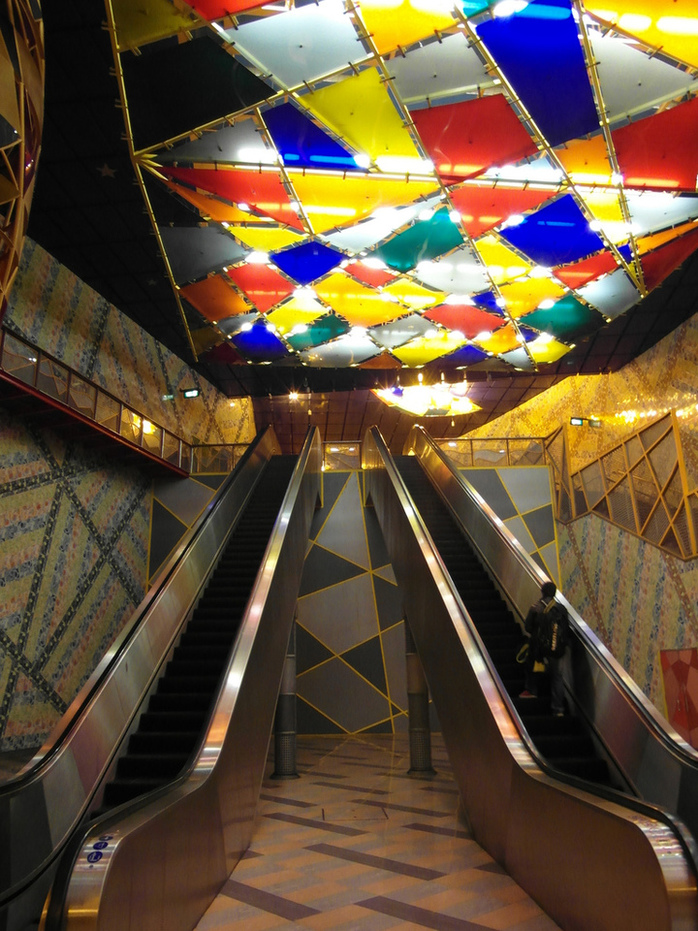
Kaleidoscope of Colour at Olaias Station in Lisbon
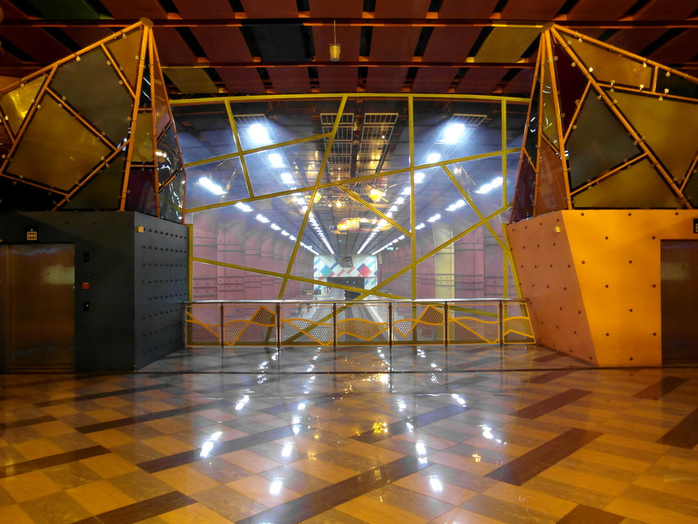
Stadion Station (Stockholm, Sweden)
Feel like stepping into a rainbow? Then your best
bet is to pay Stadion Station a visit. Opened in 1973, this cavernous
underground hub serves the busy Stockholm metro red line. Colourful
ceilings, stone walls and glossy grey tiles lead transit users down to
the station’s platforms, which are drenched in bright white light
courtesy of modern track lighting fixtures. The tunnel walls pulse with
colour, making pedestrians feel as if they’re floating above the clouds
and into a rainbow. The real question is whether they'll find the pot of
gold at the end of the rainbow — but chances are they already have.

Rainbow at Stadion Station in Stockholm
Toledo Station (Naples, Italy)
Opened in September 2012, Toledo subway station is
one of Europe’s newest metro stops. It's also one of the deepest, at 50
metres below street level. Designed by Spanish firm Oscar Tusquets
Blanca, this station was modelled after water and light. Just below
street level, transit users immerse themselves in what almost seems to
be an art museum. Intricate tile mosaics adorn the walls, blue-tinted
skylights and spotlights cover the ceiling, and reflective steel-covered
staircases lead passengers to the terminal’s turnstiles. Visitors are
then taken down into the station’s depths via glass-framed steel
escalators that are bathed in a bluish glow. As you descend to the
bottom level, you'll feel as if you’re diving deeper and deeper into a
Mediterranean sea, surrounded by aquatic-themed walls and glass panels.
This subway station earned the distinction of being one of the only
Metro Art stations in Europe.

Can You Count the Tiles?
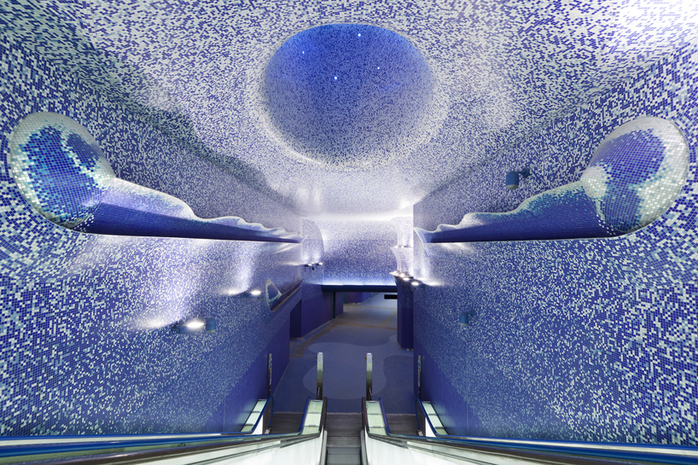
Step into the Universe!
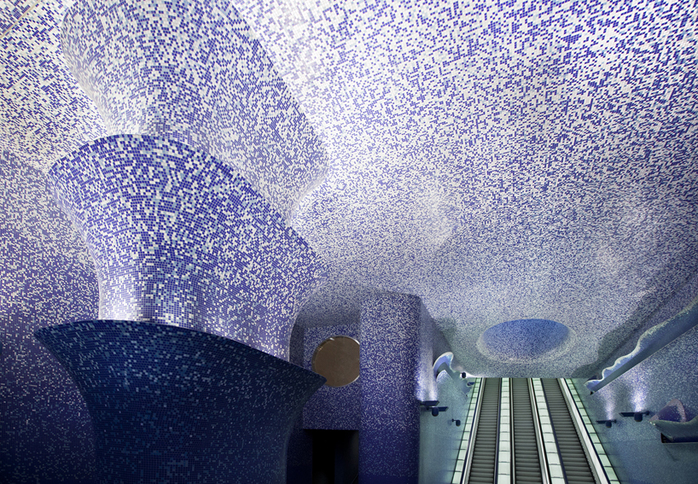
Toledo Station was Designed by Oscar Tusquets Blanca
Zoloti Vorota Station (Kiev, Ukraine)
Never before or since has a subway station seemed
as cavernous and medieval at the same time! Zotoli Vorota's arched
ceilings are hung with giant, steel-rimmed chandeliers that evoke a
medieval banquet. Intricate tile mosaics adorn each archway, and dark
grey slate tiles cover the floors. Giant circular columns stand
throughout the station, supporting the thick tunnel walls. A cool, crisp
breeze fills the inside of Zoloti Vorota thanks to all the marble used
in its construction, and echoes of footfalls, conversation, and laughter
fill the air. Zoloti Vorota Station opened in December 1989, and it
remains one of the most popular (and busiest) subway stations on the
Kiev Metro line.

Zoloti Vorota Station by Wiki Media Commons
For many city dwellers and tourists, using public
transit is a real eye-opener. Let’s be honest — when you enter the
depths of a subway tunnel, the last thing you’re expecting is to be
blown away by architecture and design. Have you visited any impressive
subway stations lately?
 Stockholm Tunnelbana (Sweden)
Stockholm Tunnelbana (Sweden)

`Subway stations are usually designed in a clean and modernistic style
in order to make people forget they are traveling deep underground. It
is different in the Stockholm subway though, in which several of the
deep underground stations are cut into solid rock which were left with
cave-like ceilings. Oldnature meets nextnature. The fine ‘cave
paintings' make the finishing touch.
(Link | Photo)
 Munich U-Bahn (Germany)
Munich U-Bahn (Germany)

Munich Public Transport System (MVV) is a splendidly constructed system
consisting of dozens of S-Bahn (suburbian trains), U-Bahn (subway),
Tram-Bahn / Straßenbahn (streetcar) and bus lines, connecting all parts
of the city perfectly. This metro system has been opened in 1972 and has
spacious and clean stations. The earlier ones are rather minimalistic
in design while the later ones got more interesting architectural
features and some works of art.
(Link | Photo 1 | Photo 2)
 Shanghai Bund Sightseeing Tunnel (China)
Shanghai Bund Sightseeing Tunnel (China)

This has to be one of the most surreal, psychedlic and fun forms of
public transport. The Tunnel connects East Nanjin Rd on the Bund, and
Pudong near the Oriental Pearl TV Tower, running under the Huangpu
river. It's a psychedelic trip in a glass capsule along the 647 metre
flashing, strobing tunnel.
Read more at
http://www.oddee.com/item_97031.aspx#t4RHah8BgRI2IJiJ.99













































 Stockholm Tunnelbana (Sweden)
Stockholm Tunnelbana (Sweden)
 Munich U-Bahn (Germany)
Munich U-Bahn (Germany)
 Shanghai Bund Sightseeing Tunnel (China)
Shanghai Bund Sightseeing Tunnel (China)